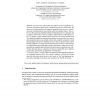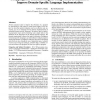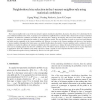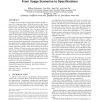123 search results - page 9 / 25 » Partial Classification Using Association Rules |
ICCS
2007
Springer
14 years 1 months ago
2007
Springer
Abstract. Previous work of the authors has studied a notion of implication between sets of sequences based on the conceptual structure of a Galois lattice, and also a way of repres...
ICFP
2010
ACM
13 years 8 months ago
2010
ACM
Partial evaluation aims to improve the efficiency of a program by specialising it with respect to some known inputs. In this paper, we show that partial evaluation can be an effec...
PR
2006
13 years 7 months ago
2006
The k-nearest-neighbor rule is one of the most attractive pattern classification algorithms. In practice, the choice of k is determined by the cross-validation method. In this wor...
ANCS
2009
ACM
13 years 5 months ago
2009
ACM
As the Internet grows, both the number of rules in packet filtering databases and the number of prefixes in IP lookup tables inside the router are growing. The packet processing e...
SIGSOFT
2007
ACM
14 years 8 months ago
2007
ACM
A software system interacts with third-party libraries through various APIs. Using these library APIs often needs to follow certain usage patterns. Furthermore, ordering rules (sp...




